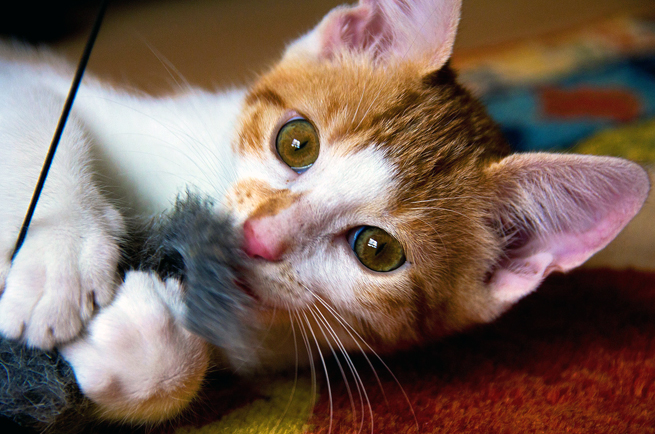Training your new kitten
Bringing home a new kitten is always an exciting time. Kittens are very affectionate and playful, and you will have endless hours of fun with it—but being a responsible pet owner doesn’t mean that you just let the kitten do what it wants. You are responsible for training it and ensuring that it will grow up to become a well-mannered animal that is always a joy to be around.
21 Mar 2016 By Andrew Clarke Comments

Housetraining your kitten
Housetraining kittens is so much easier than teaching a puppy, so rest easy, you’re not about to embark on a two month journey of mess. Even in the wild, cats are known to bury their … um… “waste” under the ground.
However, making sure your kitten knows where its bathroom is can be a bit of a chore. First, you will need to buy a litter box with fine cat litter in it. To encourage the kitten to use this unfamiliar box of grit, you can “place” its scent there by putting bits of its shed fur in the box. This will help the kitten get used to the litter box.

Avoiding furniture scratching
One of the most common complaints of cat owners is furniture scratching. Have some scratching posts or pads in well-chosen places inside the kitten’s “safe room.” Cats typically scratch objects (and yes, even your expensive furniture) to mark their territory, and giving them alternative objects to scratch will lessen the chances of your favourite chair being ruined.

Feeding your kitten
Cats, like dogs, can also be taught a feeding schedule. Make sure that you give it its meals two to three times a day at regular hours. However, make sure to consult with a veterinarian on your kitten’s diet. Avoid feeding your kitten fruit or fried food and never ever EVER give your cat milk. Despite what Disney has told us, cats are lactose intolerant.
Socialising your cat
At the age of seven weeks, kittens often become more cautious of the people they encounter. To help your kitten to get used to the presence of other people, invite friends to visit your home.
Childless cat owners can also invite a couple of children to visit the kitten (just make sure that the kids are told how to treat the kitten as children can be a bit rough, which is not something cats readily welcome).
Socialising the kitten with other pets, especially those of the canine variety, is also important—just make sure that the dogs you will be inviting over are friendly to cats and would follow their owners’ command no matter what.

Teaching your kitten to ride in cars
Many cats are hesitant to ride in a car, mostly because the sounds, new sights and scents typically overwhelm or even frighten them.
To break the ice, place your cat in the car without turning the engine on, let them explore and get used to the space. Next put your kitten in a cat carrier and turn the engine on so your cat can familiarise itself with the sound. After a while you can start taking your cat on short car journeys around the block, extending the length a little each time. Just make sure to have a special treat for them when you return home.
Dealing with nervous behaviour
As they begin to become cautious about the world around them, kittens will always show nervous behaviour when encountering new things. Make sure to refrain from smothering your kitten with affection or showing nervous behaviour yourself. It’s hard to reassure your cat that daddy long-legs spiders are nothing to worry about while shrieking and crying yourself.
Cats can be drama queens. Some kittens might learn to feign frightened or nervous responses just to get lots of attention from their owner, so make sure you stay calm whenever your kitten encounters an overwhelming situation.

21 Mar 2016 By Andrew Clarke Comments
comments powered by Disqus






